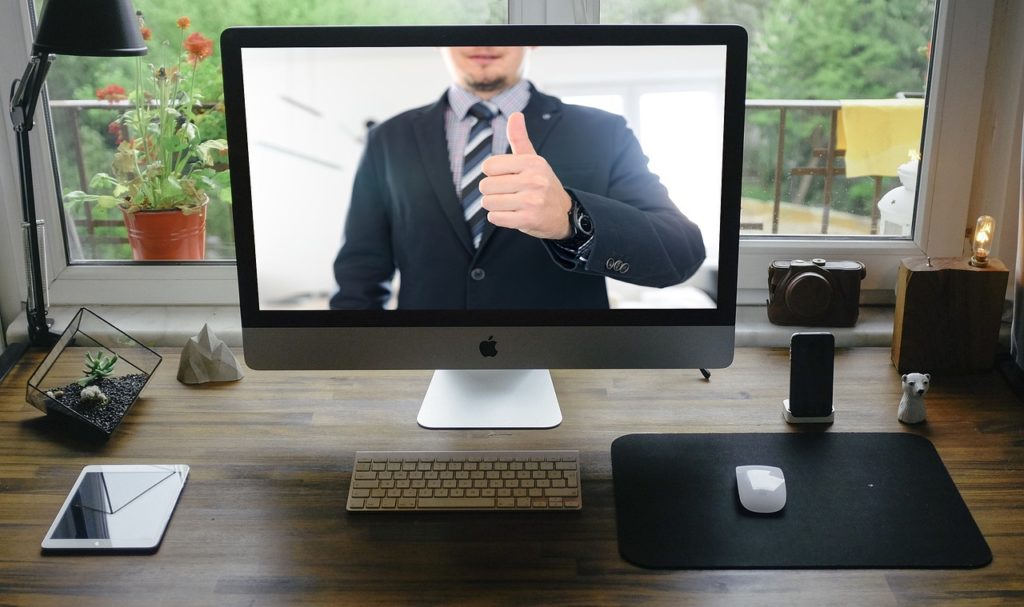The Couch
We’ve talked about the History of Coaching and how it was developed from mere life advice to realizing one’s “inner opponent.” This time, let’s examine the physical modalities of coaching from the first days to the digital age. Many –who don’t know better – think of life coaching as therapy. For some, it may be like that, but we coaches know that coaching is about empowering our coaching partners to find the answers within themselves. But let’s set aside all the conceptual talk for a moment and talk about concrete, physical modality. How does it actually happen?
Back in the 70s, if you wanted to talk to a coach, it was in person. Sure, maybe a couple phone sessions happened, but coaches do best when we see our coaching partners so it was primarily in person. Maybe the coaching partner sat in a chair or a couch. The office would be well lit and comfortable. The coach would sit upright and facing the coaching partner, perhaps with notepad in hand. (Some manage to memorize things and jot them down later, but most of us need to write some notes.)
In short, getting into a coaching session meant getting somewhere in person. Access meant physically being there. Coordinating that access meant time, phone calls, travel, and scheduling all that. It’s arguable that we’re busier today than we were back then, but it took time and not everyone had that then either.
Today’s Disconnectivity
Fast forward. Really, really fast forward. Not only are we in a digital age, but we’re completely reliant on our technology. Yes, our screens have pulled us away from the face-to-face world through various forms of escapism, but they aren’t the only cause. Recent shutdowns, restrictions, and isolation, have changed not only our lifestyles but our connectivity. It’s a disconnectivity that’s thrown a larger wrench than ever in our mental health status as a society. We’re apart from each other physically and often mentally and that’s hurting us more than we know.
Terry Belke writes, “There is evidence that our addiction to technologies such as social media can lead us down a very dark path” (WGRZ, January 2022). Indeed, we hear that increased social media and gaming can contribute to anxiety and depression. We’re not in physical contact with others. We’re constantly reading typed words with no facial expressions or mannerisms. Interacting with a screen, no matter how aware you are of a person being on the other end, reduces compassion. It’s mechanical in a sense, machinelike, in the way we process from behind a screen and consider our response as if playing a sim. So, how do we escape from this escapism?
Finding Connection
Technology doesn’t have to be the enemy! We can use it for our good, but we need to be deliberate. This requires inspection and judgment of how we’ve been using it and continue to use it daily. During COVID shutdowns, many used social media to connect to groups with whom they found solidarity. Like-minded folks found comfort in like-minded communications. It gave solid ground to an otherwise rocky situation. Schools needed to use technology to continue lessons, doctors started televisits, companies created web meetings… The list goes on, but what does this have to do with coaching?
Coaching with Technology
Before technology went, well, viral, you needed to physically find a local coach, make the time to call and schedule an appointment, and physically get there. Now, you can schedule online, fill out forms online, and commute to… your kitchen or office or living room for the appointment. Your coach can still see you and he or she doesn’t have to be local to you.
Even becoming a coach is more possible with online classes, digital connection with others nationally or internationally, and sharing documents through web folders. At First Responder Coaching, we have coaches across the country taking classes and meeting together. Sometimes we even meet in person at conventions! As coaches are more able to share experiences, advancements, education, and resources, you benefit!
New Tech, New Studies
New tech means new studies in the medical world. With more digital connection and ability to study mental health and various treatment options, doctors are finding better solutions to the growing mental health problem of our society. EMDR and Virtual Reality Therapy are just at the tip of these developments. There’s so much more to discover and more studies are being conducted every day. We’re certainly behind the eight ball in realizing the issues with mental health, but we’re hoping that growing technology and advancements will combat this. More rapid information sharing means greater awareness. Growing education access means more discoveries and bigger fields of study.
Coaching for the Future
What could coaching look like in the future? Back in the 80s, some of us may remember taking a ride on Spaceship Earth or the “giant golf ball.” Towards the end, there was a girl in her bedroom in the US talking to another girl on a screen. The other girl was in China. In the 80s, especially to a child, this seemed amazing. Guys, we’re there. We’re at amazing.
So, what could coaching look like in the future? Well, what could it look like now? We are in the digital age! We have instant access, communication across the globe, educational resources, and connections like never before. Let’s connect; let’s reach out and keep talking. We can’t lose the momentum now! Keep spreading the word, the resources, and the impact that coaching is powerful and possible. You are powerful and possible! The future really is now.
